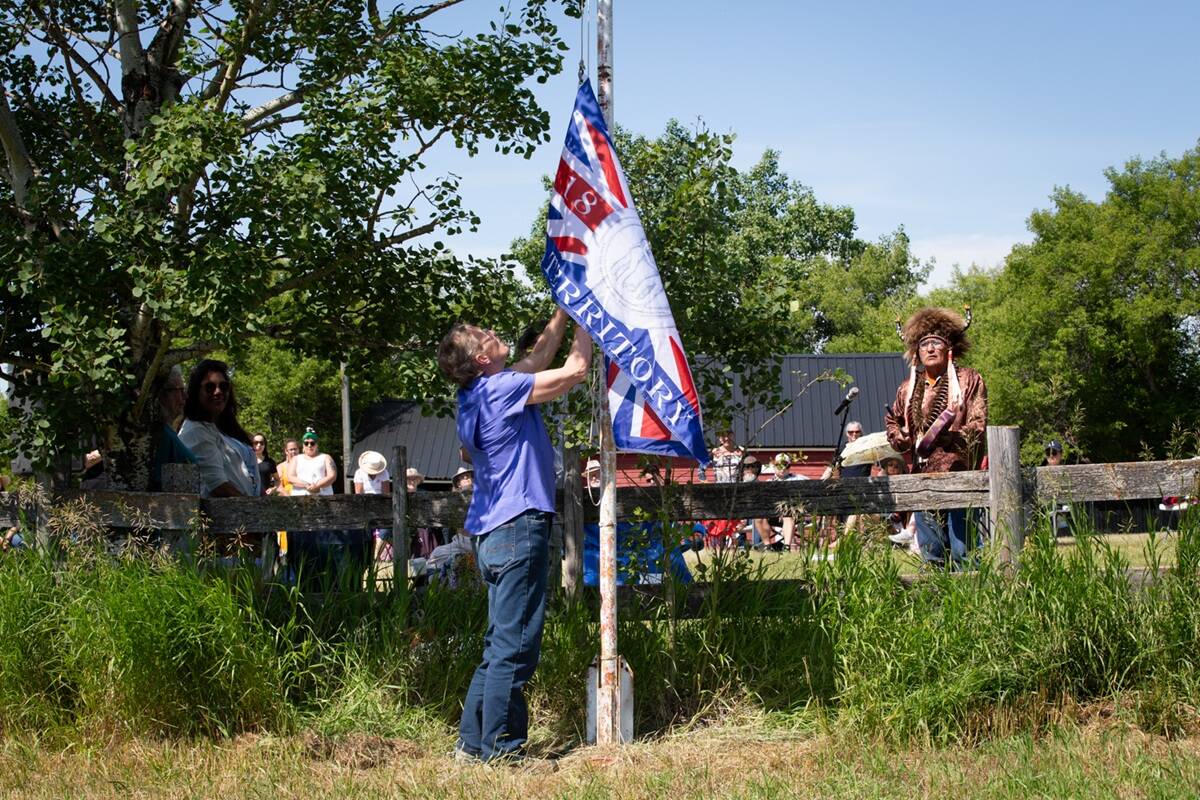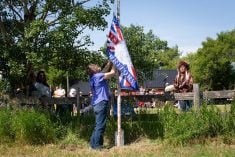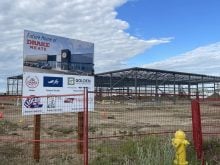It’s been nearly a decade since Manitoba cattle producer Ian Wishart pitched his concept for the alternate land use services (ALUS) program to the Keystone Agricultural Producers (KAP). Unless you’ve been involved with a pilot project, you may wonder what’s become of it all.
Two major announcements in early December indicate ALUS is alive and well. Ted Sutton, manager of Alberta’s first ALUS project in the County of Vermilion River, received word from the Delta Waterfowl Foundation (DWF) that funding would be in place to begin phase one early in the new year. The following week, the government of PEI announced that it would skip the pilot project route and become the first province in Canada to roll out a province-wide ALUS program. It has committed $750,000 to fund the program in its first year.
Read Also

Treaty Land Sharing Network expands reach in Saskatchewan and Alberta
The Treaty Land Sharing Network, which connects land holders with First Nations and Metis people, has expanded since it began in 2018
Now that evaluations are coming in on Canada’s first ALUS pilot project in the RM of Blanshard, Manitoba, and other pilot projects have been announced or are underway in other provinces, the idea of farmers and ranchers being paid for providing ecological goods and services (EG&S) to the Canadian public is beginning to gain recognition at the political level.
Sutton, a former dean of agriculture at Lakeland College, now runs a private consulting business from his home in Vermilion. He feels the time is right for agricultural organizations to have meaningful influence on government policy related to providing ecological goods and services on privately owned agricultural land. The best way for individual producers to get involved is to support the efforts of their producer organizations because they have established contacts within government departments. In Alberta, Alberta Beef Producers and Wild Rose Agricultural Producers are two organizations that expressed interest in expanding programs such as ALUS.
“It’s only right and fair that producers get paid for conserving private land for the good of society. EG&S are in everyone’s interest to have but in no one’s specific interest to provide. Examples include clean and abundant water, flood control, ground water recharge, biodiveristy and wildlife conservation, and improving air quality,” Sutton explains. All are products that farmers have always delivering at their own expense. The ALUS program is one way to encourage production of EG&S by rewarding landowners, as opposed to government regulation and penalties.
EG&S go beyond management practices. There may be money available apart from the environmental farm plan allowances for best management practices to help with infrastructure development, such as solar pumps and fencing cattle out of waterways. However, producers can’t double count programs. Likewise, land already committed to government programs such as carbon credits could not be enrolled under ALUS.
One way beef producers could easily participate in ALUS is by deferring grazing on a specified number of acres each year for the period of the contract. It wouldn’t have to be the same parcel of land every year, therefore ALUS presents an opportunity to earn income from rangeland during rest and recovery years. Similarly, riparian and wetland areas could generate revenue without the hassle or risks associated with grazing, haying or cropping them.
The DWF strongly believes that real progress in conservation on privately owned agricultural land will only be possible through partnerships with agricultural producers in the U. S. and Canada. ALUS differs from other proposals for the delivery of EG&S in that it places agriculture firmly in charge, rather than conservation groups.
It wasn’t long after KAP initiated ALUS in 1999 when DWF partnered to help deliver the program. Since then, it has committed funding to the pilot projects underway in Ontario and now Alberta.
Goals set to meet needs
The basic premise of ALUS is that the community at large should identify the goals, and farmers and ranchers should be given the option of whether they are willing to provide those benefits for the price offered. In this way, ALUS can be customized to address local needs.
The goals of the first pilot program in the RM of Blanshard were to preserve wetlands, and to determine ALUS’s feasibility as a locally driven approach to enhancing EG&S. Of the 225 landowners in the RM, 168 signed contracts and enrolled 20,942 acres in 2006. The following year, a similar number of acres were signed on through 163 contracts.
The three-year demonstration project in Alberta is designed to address flooding issues by creating and preserving wetlands in the Big Gully district.
In the first phase they will be looking to enroll about 1,500 acres of existing wetland for Alberta Transportation’s wetland mitigation program. It requires the department to create wetland areas equal to those they drain to build roadways. The second phase will bring another 1,500 acres into the program through the construction of dams and drainage ditches on land leased from farmers.
The goal of the ALUS program in PEI is to protect water fish and wildlife habitat by reducing soil erosion and siltation of streams, improving water quality and improving and increasing wildlife habitat.
Calculating Market Values
The Manitoba project was launched in November 2005 with funding from the federal and provincial departments of agriculture. In time the project attracted other sponsors such as KAP, DWF, RM of Blanshard, Little Saskatchewan Conservation District, Manitoba Rural Adaptation Council, the Manitoba Agricultural Services Corporation and the University of Manitoba, who provided funding and in-kind support.
Lease rates were determined in 2006 by an advisory committee. ALUS-eligible land was grouped into four service categories: wetland, riparian, natural and ecologically sensitive. Rates offered for wetland, riparian and natural areas were $15 per acre for land on which no agricultural activity would occur, $7 per acre for land to be hayed, and $5 per acre for land to be grazed. Rates for sensitive land were a bit higher at $25 per acre for no agricultural use, $10 for haying and $5 if it was grazed.
Producers who completed an evaluation after year two suggested rates in the $19 to $27 per acre range for maintaining existing environmental assets and even higher for restoration of assets. The average payout per landowner was $1,500 in year one and $2,200 in year two, which was viewed by the evaluators as being small relative to the time and effort farmers invest and in comparison with gross farm receipts. There were several comments that the payments penalized livestock producers and optimal contract length should be three to five years.
PEI’s program is totally funded by the province. Project manager Shawn Hill says they would like to have the federal government on board and discussions are on-going, but no commitment has been made to date because this is not a pilot program. The concept of annual payments seems to be the stickler for Ottawa.
Median land rental values have been used as the basis for payment. The program pays for establishing trees in buffer zones, retiring sensitive land, and conserving land with soil conservation structures.
The payment schedule is $185 per hectare per year for buffer zones and sensitive land retired to extend buffer zones beyond the regulation 200 metres, or establishing 10-metre grassed headlands around row crop fields; $100 per hectare per year for land sloped more than nine per cent and $250 per hectare per year for crop land taken out of production to construct permanent soil conservation structures such as terraces, berms and grassed waterways. Some categories require that the land be actively cropped to be eligible. The term of the contract is five years and the first payment follows signing of the contract. Applications are now available.
The big question of land rental rates is yet to be settled in Alberta. The original proposal was to use opportunity cost or current land rental rates to estimate market value. Discussions are on-going with the provincial departments and no applications had been submitted to the federal government.
Though the payments for the first phase funded by DWF had not been announced at the time of writing, it was expected that producer signup would begin in March.
For more information about the ALUS projects underway across Canada visit the KAP’s website at















